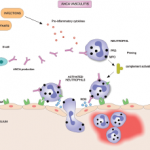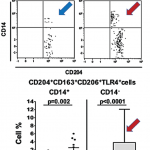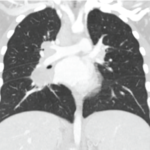Nearly 120 ACR/ARP member advocates and rheumatology patients were on Capitol Hill this week fighting for rheumatology as part of the ACR’s Advocates for Arthritis conference.
The ACR/CHEST ILD Guidelines in Practice, a video
In collaboration with the American College of Chest Physicians, the ACR released two new comprehensive guidelines aimed at improving the screening, monitoring, and treatment of patients with interstitial lung disease (ILD) secondary to systemic autoimmune rheumatic diseases (SARDs). Recently, Sindhu R. Johnson, MD, PhD, professor of medicine at the University of Toronto, Canada, director of the Toronto Scleroderma Program and principal investigator for the guideline, and Elana J. Bernstein, MD, MSc, Florence Irving associate professor of medicine in the Division of Rheumatology at Columbia University, New York City, and co-first author, presented a webinar to talk about how the guidelines were developed and present some of the recommendations and their rationale: Watch the recording now!
Long-Term Physical Activity Lowers the Risk of RA among Women
A new study adds to the evidence that metabolic factors play an important role in the pathogenesis of rheumatoid arthritis (RA). In this large, prospective cohort study, Liu et al. found that increased physical activity among women was associated with a reduced risk of RA…

The Choose Rheumatology Experience Encourages Med Students, Residents to Pursue Rheumatology Careers
Medical students and residents are choosing careers in rheumatology, thanks in part to the annual Choose Rheumatology Experience hosted by the Rheumatology Research Foundation during the ACR/ARP Annual Meeting. The Choose Rheumatology Experience is a special half-day program designed to help future physicians and rheumatology professionals navigate the Annual Meeting. Cultivating interest in rheumatology is…

In Mouse Model, a TLR-9 Deficiency May Trigger Severe Lupus
Toll-like receptors play an important role in host defense. TLR-7 recognizes viral ssRNA, but also plays a role in the development of systemic lupus erythematosus (SLE). Genetic ablation of a similar receptor, TLR-9, results in opposite effects, with severe disease and kidney involvement. The mechanism of how this works remains unknown. Anna-Marie Fairhurst, PhD, from…

Study Probes Whether Belimumab Can Lower Vasculitis Relapse Rate
In an international clinical trial, adding the drug belimumab to standard maintenance therapy for patients in remission with vasculitis did not lower the relapse rate. The double-blind, placebo-controlled study evaluated the safety and efficacy of belimumab as adjunctive therapy to maintain remission in anti-neutrophil cytoplasmic antibody (ANCA) associated vasculitis (AAV). Results of the multi-center, industry-sponsored…

New Studies Identify Possible Markers of Early Systemic Sclerosis
Although the true cause of systemic sclerosis (SSc), or scleroderma, remains unknown, researchers have made progress in detecting the autoimmune disease’s early presence. Beyond the physiological signs of Raynaud’s phenomenon, a capillaroscopy can detect alterations in microcirculation and lab tests can confirm the presence of telltale autoantibodies, such as anti-topoisomerase 1, anti-centromere and anti-RNA polymerase…

Bending, Not Breaking
“And of course, I am not telling you to do it. That would be illegal.” As a general rule, I try not to instruct my patients to break the law. My business model depends on repeat customers, so placing a patient at risk of getting arrested—even if that risk is remote—doesn’t seem like a good…
Advocates for Arthritis Will Target Step Therapy, Workforce Shortage
The 2019 event, to be held Sept. 9-10 in Washington, D.C., will bring together rheumatology professionals and patients to advocate on behalf of the rheumatology community.
Asthma, Allergic Disease, Passive Smoke Exposure & the Risk of RA
Rheumatoid arthritis (RA) is one of the most common autoimmune diseases. One hypothesis is that inflammation in the respiratory tract results in autoantibody formation that later leads to disease. Kronzer et al. set out to narrow the knowledge gaps related to the oral-respiratory factors that may mediate RA pathogenesis.
A More Complicated Pregnancy: Inflammatory Arthritis Increases the Risk for Adverse Outcomes
Pregnant women with inflammatory arthritis may have an increased risk for preterm delivery. New research examined the risk of preterm delivery and other pregnancy complications in women with RA and JIA vs. healthy controls…
- « Previous Page
- 1
- …
- 75
- 76
- 77
- 78
- 79
- …
- 250
- Next Page »
